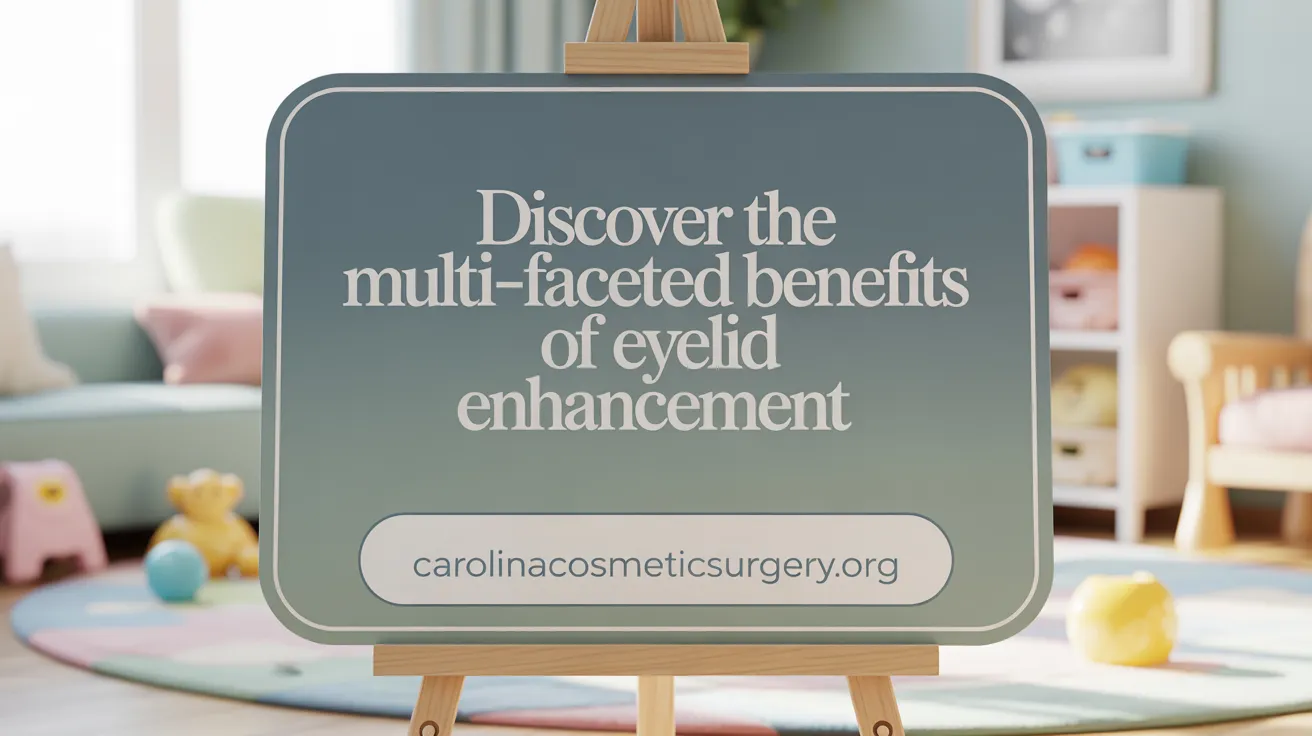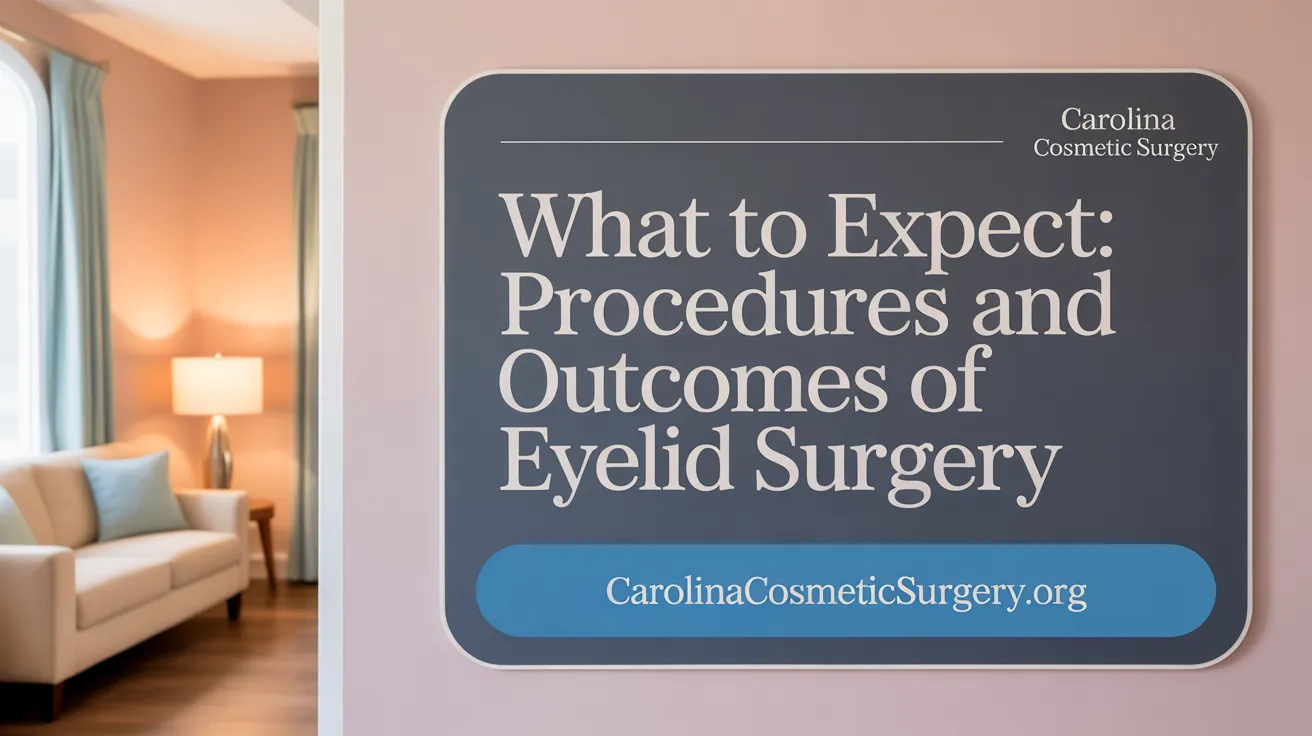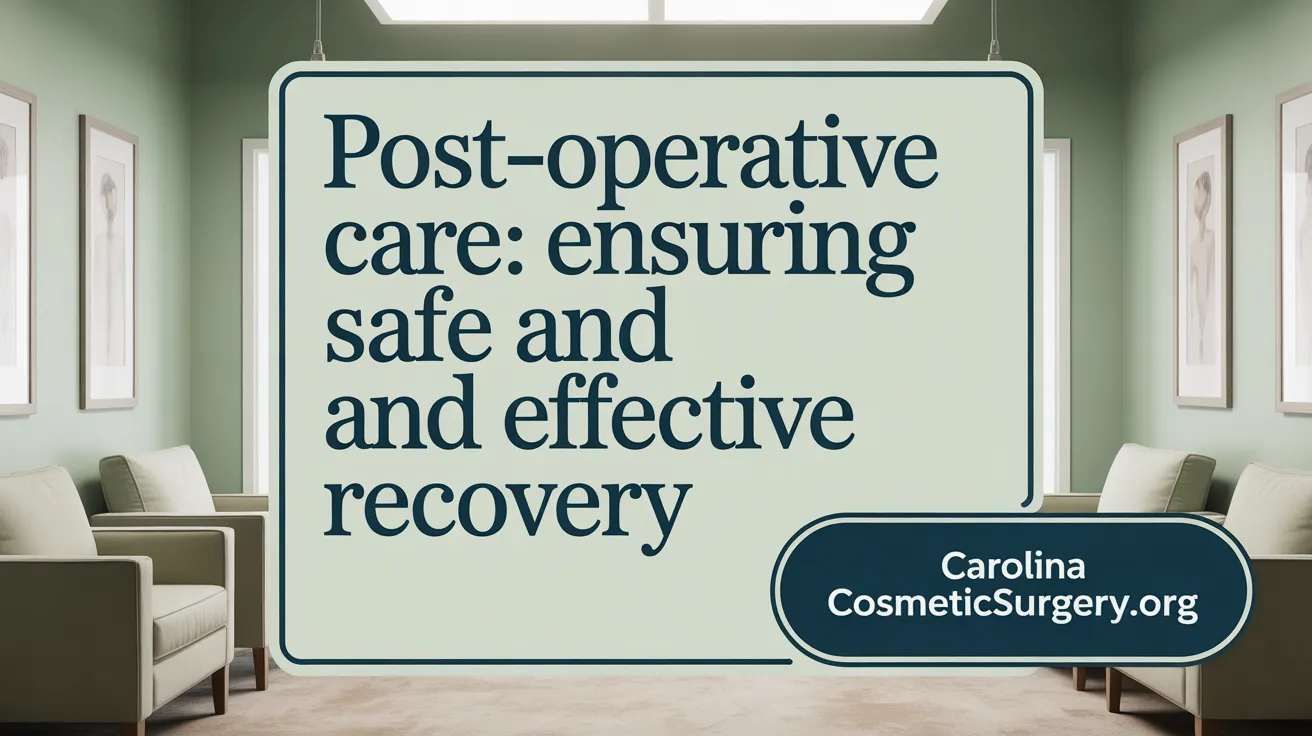Introduction to Blepharoplasty
Blepharoplasty, commonly known as eyelid surgery, has grown in popularity as both a cosmetic and functional procedure. It addresses the natural aging signs around the eyes by removing excess skin, fat, and muscle from the upper and lower eyelids. Beyond aesthetic enhancement, blepharoplasty can significantly improve vision and eye health, making it a transformative surgery for many. This article explores the comprehensive benefits, candidacy considerations, procedural details, recovery expectations, risks, and the lasting impact of this specialized surgery.
Aesthetic and Functional Benefits of Blepharoplasty

What are the aesthetic and functional benefits of blepharoplasty (eyelid surgery)?
Blepharoplasty offers a combination of cosmetic and practical advantages that can significantly enhance both the appearance and health of your eyes.
Aesthetically, the procedure rejuvenates the eye area by removing excess skin, fat, and tightening underlying muscles. This results in a more youthful, rested, and alert look, often reducing the tired or “angry” appearance that sagging eyelids can create. Patients frequently report an improved facial harmony, as the natural contours of the eyelids are restored and wrinkles or fine lines around the eyes are softened.
Functionally, blepharoplasty can improve vision when eyelid drooping (ptosis), or excess skin obstructs the visual field. Especially in severe cases, removing the extra tissue allows more light to reach the eyes and broadens the peripheral view. The scars from the procedure are minimal and well hidden within natural eyelid folds or along the lash line, making scars nearly invisible after healing.
Results tend to last five to seven years or longer, with some patients enjoying benefits for over a decade. Besides aesthetic enhancement, the surgery boosts confidence by creating a more vibrant and energetic appearance. It also simplifies makeup application—fewer tricks are needed to cover sagging or puffiness.
When performed by a skilled, board-certified surgeon, blepharoplasty is a safe, effective procedure that provides long-term benefits, improving both how you look and how you see.
| Benefit | Description | Additional Details |
|---|---|---|
| Aesthetic rejuvenation | Restores a youthful, rested appearance | Softens wrinkles, improves eye shape |
| Reduction of sagging and puffiness | Eliminates excess skin and fat | Creates smoother eyelids |
| Improved facial harmony | Enhances overall facial balance | Maintains natural facial features |
| Vision improvement | Removes skin obstructing sight | Enlarges visual field |
| Minimal scarring | Incisions hidden within eyelid creases | Scars fade well after healing |
| Long-lasting results | Effects last 5-10+ years | Some may seek secondary surgery |
| Confidence boost and makeup ease | Looks more alert, easier to apply makeup | Better social and personal interactions |
How Blepharoplasty Enhances Vision, Appearance, and Eye Health

How does eyelid surgery improve vision, appearance, and eye health?
Eyelid surgery, or blepharoplasty, offers many benefits for both vision and the overall health of the eyes. One of its main functional advantages is improving sight by removing excess skin, fat, and muscle that have sagged over the eyes due to aging or genetics.
Heavy or drooping eyelids can obstruct part of the visual field, especially the upper and peripheral view. By making precise incisions in natural eyelid creases and removing or repositioning tissue, the surgery restores unobstructed sight. This is particularly important when sagging skin causes difficulty seeing clearly or impacts daily activities.
In addition to vision correction, blepharoplasty can address eyelid drooping or ptosis, which can cause eye discomfort, irritation, and even headaches from strained muscles trying to keep the eyelids open. Correcting these issues reduces eye fatigue, minimizes dryness or irritation, and enhances comfort.
Aesthetic improvements are also significant. The procedure rejuvenates the eye area, giving it a more youthful, rested look. Removing excess skin and fat softens wrinkles and fine lines around the eyes, restoring natural contours and brightening the face.
Furthermore, reducing the heaviness of drooping eyelids can help maintain healthy eyelid function, prevent further sagging, and reduce the risk of skin irritation or corneal issues caused by skin rubbing against the eye.
Overall, blepharoplasty treats both the functional and cosmetic aspects of aging eyelids, supporting better vision, healthier eyes, and a more youthful appearance.
| Benefits | Details | Additional Insights |
|---|---|---|
| Vision improvement | Removes excess skin obstructing sight | Especially helpful for heavy eyelids or ptosis |
| Eye comfort | Reduces irritation and dryness | Prevents eyelid skin from causing damage |
| Appearance | Restores natural eyelid contours | Creates a younger, alert look |
| Eye health | Minimizes strain, fatigue | Protects against skin-related eye issues |
Typical Procedures and Patient Outcomes in Blepharoplasty

What are the common procedures involved in blepharoplasty and what outcomes can patients expect?
Blepharoplasty, or eyelid surgery, is a cosmetic procedure designed to improve the appearance of the eyelids, as well as to address functional issues like obstructed vision. The surgery involves making precisely placed incisions along the natural folds of the eyelids or just beneath the lower lash line.
During the procedure, excess skin, muscle, and fat are removed or repositioned depending on the patient's specific needs. For the upper eyelids, this often means trimming sagging skin and tightening underlying tissues to create a more rested appearance. In lower eyelids, excess fat deposits contributing to puffiness or bags are carefully taken out or redistributed.
The duration of the surgery typically lasts between one to two hours and is usually performed under local anesthesia, making it a safe and outpatient procedure. Post-surgery, most swelling and bruising tend to subside within 10 to 14 days, though full healing and the final appearance may take several months.
Results from blepharoplasty include a more youthful and alert look, restoring natural eyelid contours and reducing signs of aging like wrinkles and sagging skin. In cases where drooping eyelids obstruct the visual field, the surgery can significantly improve vision.
The longevity of results can range from five to ten years or longer, depending on individual factors such as skin quality and lifestyle. While generally safe, there are potential side effects like swelling, bruising, dry eyes, and rare risks of abnormal scarring or eyelid malposition. Proper surgical technique and diligent postoperative care are critical to minimizing complications.
Overall, patients can expect a combination of aesthetic enhancement and possibly improved functional vision, leading to increased confidence, a more rested appearance, and better facial symmetry. Choosing a qualified, experienced surgeon is essential to achieve natural-looking results with minimal risks.
Candidate Eligibility and Age-Related Considerations

Who is a suitable candidate for blepharoplasty, and are there specific considerations for different age groups?
Individuals considering blepharoplasty should generally be in good health, without underlying eye conditions that could complicate surgery or healing. Typical candidates exhibit excess skin on the upper eyelids, puffiness, or bags under the eyes, which may impair vision or cause a tired appearance.
Age is not an absolute factor for eligibility. While most candidates tend to be over 30 or 40 years old, younger individuals with hereditary eyelid issues, such as excess skin or fat, can also be suitable. In fact, early intervention can sometimes slow aging signs around the eyes.
Candidates must avoid serious medical issues such as uncontrolled diabetes, high blood pressure, or active eye infections. Lifestyle habits are also important; smoking should be avoided before and after surgery to enhance healing.
It is crucial that candidates hold realistic expectations. The goal is to improve appearance and function, not to dramatically change facial features. For younger age groups, hereditary factors and environmental influences may contribute to eyelid sagging, prompting some to pursue preventive or early treatments.
In summary, anyone who meets the health criteria and understands the limits of the procedure can be a suitable candidate. Proper assessment by a qualified surgeon helps determine individual candidacy based on age, health, and eyelid conditions.
Recovery, Risks, and Postoperative Care after Eyelid Surgery

What is the typical recovery process after blepharoplasty and what should patients expect?
The recovery period following eyelid surgery usually involves an initial phase characterized by swelling, bruising, and some discomfort. These symptoms tend to peak within the first two to three days after the procedure. Most patients find that swelling and bruising gradually diminish over the course of a week or so.
During the first week, patients are often advised to rest, keep their head elevated, and apply cold compresses to reduce swelling and discomfort. Mild pain or discomfort can be managed with over-the-counter pain relief medications, as recommended by the surgeon.
Sutures are typically removed within 5 to 10 days, after which many can return to work and light daily activities. However, full recovery, including resolution of residual swelling and scars, may take several weeks to months. Some residual puffiness, especially in the mornings, and faint scars that are well-hidden within natural skin folds might persist but will continue to fade with time.
Patients should avoid strenuous exercise, exposure to sunlight, and activities that strain the eyes during the initial recovery period. Following the surgeon’s aftercare instructions rigorously helps ensure optimal healing and preserves the results.
What are the risks and potential complications associated with blepharoplasty?
Blepharoplasty, like any surgical procedure, has associated risks. Common risks include infection, bleeding, dry eyes, and visible scarring. Most of these issues are manageable and can be minimized with proper surgical technique and care.
More severe but rare complications include eyelid malposition such as ectropion (outward turning eyelid) or lagophthalmos (inability to close eyelids completely). There is also the potential for post-surgical ptosis, where the eyelid droops due to muscle or nerve issues.
In extremely rare instances, patients may experience vision loss or blindness, usually related to bleeding or nerve injury during surgery. Other intraoperative or postoperative complications can include hematoma (a collection of blood), wound dehiscence (wound opening), and asymmetry of eyelids.
Additionally, some patients might experience altered sensation around the eyelids, or issues with eyelid closure that require further treatment. To reduce these risks, selecting an experienced, board-certified surgeon is essential, along with strict adherence to postoperative guidelines.
Why is surgeon qualification and patient care important?
A skilled surgeon with specialization in eyelid procedures ensures that the surgery is performed accurately, with proper techniques that reduce the likelihood of complications. Proper patient selection, considering medical history and eye health, also plays a crucial role.
Following all pre-and post-surgical instructions carefully is vital for avoiding infections, managing swelling, and ensuring that scars heal well. Patients should communicate openly with their surgeon about any discomfort, unusual symptoms, or concerns during recovery.
How long does healing take and are scars visible long-term?
Postoperative healing varies among individuals but typically follows a timeline where initial swelling and bruising decrease significantly within two weeks. Most visible scars are hidden within natural eyelid folds or beneath the lash line, making them nearly invisible after complete healing.
Long-term, scars tend to become faint and blend seamlessly with the surrounding skin. The results of blepharoplasty are designed to last between five to ten years, although aging and environmental factors can influence longevity. Proper skin care, sun protection, and a healthy lifestyle support better long-term outcomes.
Longevity of Results and Impact on Eyelid Health
The duration of blepharoplasty results typically spans between 10 to 15 years, making it a long-lasting solution for many patients seeking eyelid rejuvenation. Upper eyelid surgery often maintains a youthful appearance for around a decade, after which aging signs such as sagging may gradually reappear. Conversely, lower eyelid procedures tend to offer even longer-lasting results, often exceeding ten years, especially when patients adopt proper skin care, sun protection, and a healthy lifestyle. These measures help preserve the surgical outcomes and delay further aging of the eyelids.
Various factors influence how long the results last. Skin elasticity plays a significant role; individuals with firmer, more resilient skin tend to enjoy prolonged benefits. Lifestyle choices such as smoking, sun exposure, and overall skin health also impact longevity. Continuous aging naturally affects all facial features, including eyelids, meaning that even after surgery, some signs of aging are inevitable over time.
It’s important to understand that blepharoplasty does not treat or prevent underlying eyelid conditions like blepharitis. While the procedure can improve the appearance and function of the eyelids, it does not address infections or gland dysfunction responsible for blepharitis. Moreover, some postoperative complications, such as dry eye syndrome, may temporarily exacerbate existing eyelid issues, underscoring the importance of managing eyelid health with preoperative hygiene and medical care.
In summary, blepharoplasty offers durable aesthetic and functional benefits, but ongoing skin aging, lifestyle factors, and eyelid health management influence long-term outcomes. Patients should maintain realistic expectations and adopt protective measures to sustain their results and overall eyelid health.
Conclusion: The Comprehensive Value of Blepharoplasty
Blepharoplasty serves as a versatile solution for both cosmetic rejuvenation and functional improvement of the eyes. By removing excess skin and fat, it restores a youthful and alert eye appearance while potentially enhancing vision blocked by drooping eyelids. Appropriate candidate selection, skilled surgical execution, and attentive postoperative care maximize the benefits while minimizing risks. The procedure’s long-lasting results, coupled with improvements in eye comfort and social confidence, highlight its significance. Whether addressing aging concerns or functional impairments, blepharoplasty offers individuals a meaningful opportunity to refresh their appearance and improve their quality of life.
References
- Blepharoplasty (Eyelid Surgery): What It Is, Details & Recovery
- Eyes wide open: Understanding the benefits of eyelid surgery | ASPS
- 10 Benefits of Blepharoplasty | Campbell Cunningham Taylor & Haun
- Upper Eyelid Blepharoplasty - Barnet Dulaney Perkins Eye Center
- Blepharoplasty (eyelid surgery) - Better Health Channel
- 4 Benefits of Eyelid Surgery - Ventura Eye Institute
- See Clearly, Look Refreshed: The Benefits of Eyelid Surgery
- Blepharoplasty Eyelid Surgery | Ophthalmology & Visual Sciences
- Eyelid Surgery Dayton OH | Blepharoplasty Springboro
